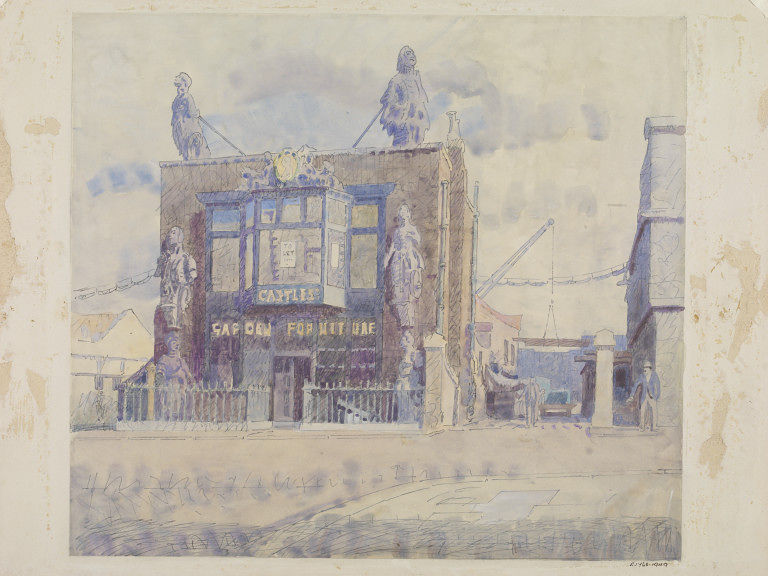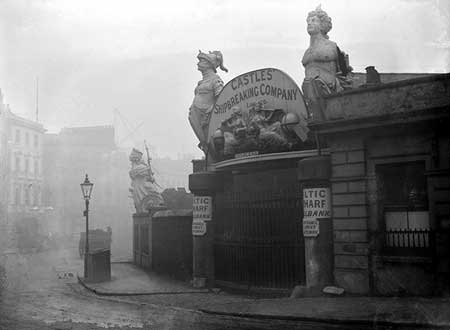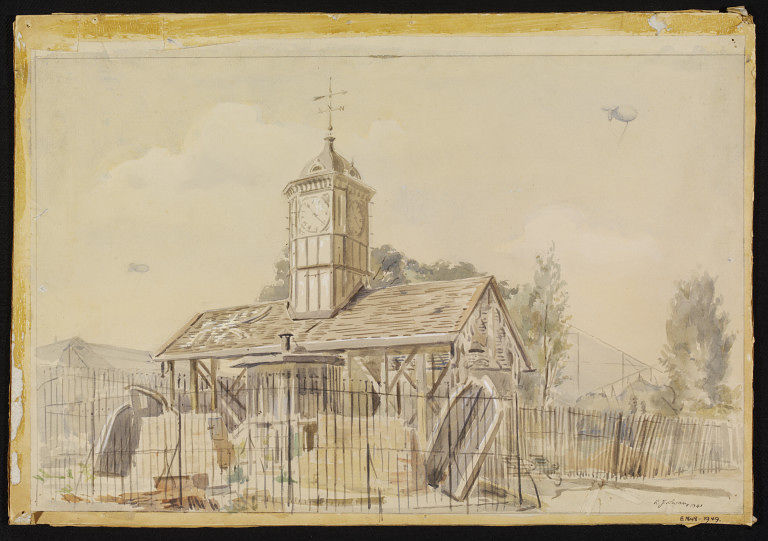Right, we are going a bit off-piste for a while, mainly because I have a bunch of interesting stories that don’t have a home elsewhere.
For the last few working weeks I’ve been immersing myself in the Recording Britain archives, which the V&A have, mostly, put online.
I’ve written about Recording Britain on here before, although very briefly, but the description still holds true:
The Recording Britain project began at the start of the Second World War, and was in many ways an close relative of the War Artists Scheme. But instead of documenting the war effort, Kenneth Clark instructed his artists to go and record in watercolours the Britain that would be lost if the Nazis invaded.
He chose watercolours for a reason, because he believed that the topographical watercolour was perhaps the quintessentially British form of art. Photographs had their place – and Clarke also initiated the National Buildings Record, which began as a means of documenting buildings which might be or had been damaged by the war – but he believed that only art could convey the atmosphere or feeling of a place.
The results were collected into a set of four books, but these only show a few hundred of the 1500 original watercolours, and even then mostly reprinted in a murky beige. The archives are both brighter and more variedly interesting
Having not only stared at the pictures very hard, but also researched them individually, I have an enormous number of things to say: about what it means to try and define Englishness, about why Barbara Jones’s contributions are not only amongst the most striking but the most prescient and whether the way in which we look at and preserve the countryside has changed.
Today, however, I am going to tell you a story about how we imagine Recording Britain ought to have worked.

This picture from the collection is Naval Relics at Millbank, by Walter Bayes, an artist who had been part of the Camden Town group, which he painted in 1940. It’s pleasingly unsettling, recording a Dickensian London which has now almost entirely been erased. The place is even more evocative, if anything, in photos.

This odd building wasn’t tucked away in a narrow side street, but rather was in the heart of the City, on Millbank, just down from the Houses of Parliament. And it was the home of Castles, the most famous ship-breakers in the country. The great warships of the British navy were brought here on their last journeys to be broken up. The wood was recycled: indestructible teak was turned into their famous garden furniture, while oak went into buildings, and anything left over was sold as logs. This left the figureheads, which were kept, and so gods, nubile women and naval officers, fifteen or twenty feet high, loomed over passersby at Millbank.
Within a year of Bayes’ picture, the entire extraordinary construction had gone. At 11pm on the night of 16th April 1941, a single bomb demolished the office. Four hours later, three more finished off the job and destroyed the yard. With the figureheads went a whole museum’s worth of name boards, steering wheels and bells. The battered remains were allegedly used as boiler fuel. (This may or may not be true. Another story says that some items were in good enough condition to be transferred to Castles’ other office in Plymouth, including figures which had allegedly come from the Fighting Temeraire, as painted by Turner. But even if they were, these offices were flattened by bombs in 1944, also taking out the firm’s records. Of all the figureheads that Castles collected, just two survive, in the Mariners Museum in Virginia USA, but only because they were sold just before the outbreak of war.)
This is what Recording Britain should have been all about: immortalising evocative and distinct places which were lost to the destructiveness of war. But that’s not actually what happened. Of more than 1500 images in the full collection, just four places were bombed in the war. The others were the Chevalier House in Exeter – a pair of half timbered houses which had just been bought by the City Council as heritage, a church in Dover which was hit twice, and the Camel House at London Zoo.

The peace, it turned out, would be far more destructive of our heritage than the war. But that’s another story for another day.
All Recording Britain images come from the V&A archive, and if you want to know more about Castles, there is an entire, very informative website devoted to their history.